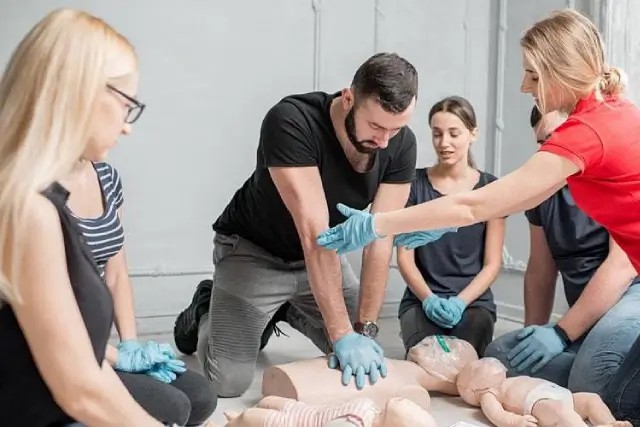Empower Your Workplace: The Critical Importance of First Aid and CPR Training
In today’s fast-paced work environment, the importance of First Aid Training and CPR certification cannot be overstated. Every business, regardless of industry, must prioritize safety and preparedness to ensure the well-being of employees and clients alike. Investing in First Aid and CPR training creates a culture of safety, fosters confidence among staff, and significantly enhances the quality of emergency medical response.
The Significance of First Aid and CPR Training in Workplace Safety
According to various studies, workplace injuries are all too common, and the potential for accidents can increase based on the nature of the work. A robust training program that includes Emergency First Aid Training equips employees with essential skills to manage medical crises when they arise.
- Immediate Response: Quick action can save lives. Understanding how to perform CPR techniques and basic first aid can mean the difference between life and death.
- Increased Awareness: Training cultivates an awareness of potential hazards, empowering employees to proactively prevent incidents through workplace accident prevention.
- Critical Skills: Skills learned expand beyond the workplace; they can also be applied in personal life or while participating in community events.
Key Benefits of First Aid Certification for Your Business and Employees
Obtaining a First Aid Certification or completing a First Aid Course provides several advantages:
- Reduced Emergency Response Times: Trained employees can provide immediate assistance, minimizing the impact of an emergency.
- Enhanced Employee Confidence: Employees feel safer and more secure when they know they possess survival skills.
- Improved Workplace Morale: A company that invests in the safety of its employees fosters loyalty and motivation.
- Insurance Benefits: Many insurance providers offer reduced premiums for businesses that prioritize safety training.
Critical CPR Techniques Every Workplace Should Master
The following are essential CPR techniques that every employee should master:
- Recognizing a Cardiac Emergency: Knowing the signs and symptoms, such as chest pain or unresponsiveness, is crucial.
- Performing Chest Compressions: Correct technique involves placing hands in the center of the chest and compressing at a rate of 100-120 compressions per minute.
- Delivering Rescue Breaths: After 30 compressions, giving two rescue breaths can help reintroduce oxygen into the body.
Meeting Health and Safety Regulations through Effective First Aid Compliance
First Aid compliance is a necessity for many businesses. Most organizations fall under health and safety regulations that mandate specific training protocols to ensure readiness for unforeseen emergencies. Compliance not only mitigates potential liabilities but also promotes a culture of care within the workplace. Regular audits and updates to training ensure that workplace standards are met.
Immediate Action: Essential Workplace Emergency First Aid Procedures
When the unexpected occurs, knowing basic first aid procedures can dramatically improve the outcome. Some immediate actions include:
- Assessing the Scene: Ensure it is safe to help before approaching the injured person.
- Calling for Help: Always contact emergency services when serious injuries occur.
- Administering First Aid: Use your training to stabilize the victim until professional help arrives.
Selecting the Right First Aid Course for Your Business Needs
When choosing a First Aid Course, consider factors such as:
- Course Content: Ensure the curriculum covers essential skills applicable to your workplace.
- Certification: Choose a course that offers recognized certification upon completion.
- Training Format: Decide between an online First Aid course for flexibility or in-person training for hands-on experience.
Comparing Online and Traditional First Aid Training Options
Both online and traditional First Aid courses have their merits:
- Online Courses: Flexible scheduling, allowing employees to learn at their own pace.
- In-Person Training: Hands-on experience and immediate feedback from instructors enhance skill retention.
Conclusion & Call to Action
Investing in First Aid and CPR training is not just a regulatory requirement; it is a vital component of a safe work environment. By equipping your team with these essential skills, you’ll foster a safer, more supportive workplace culture. Don't wait for an emergency to realize the importance of preparedness. Enroll in a certified First Aid & CPR training course today and make your workplace a safer place for everyone.
For more information on our training courses, visit our website or contact us directly at [email protected].



 349,500 Offered Certificates
349,500 Offered Certificates
 24/7 Online Training
24/7 Online Training
 Money Back Guarantee
Money Back Guarantee
 Fully Accredited Courses
Fully Accredited Courses
